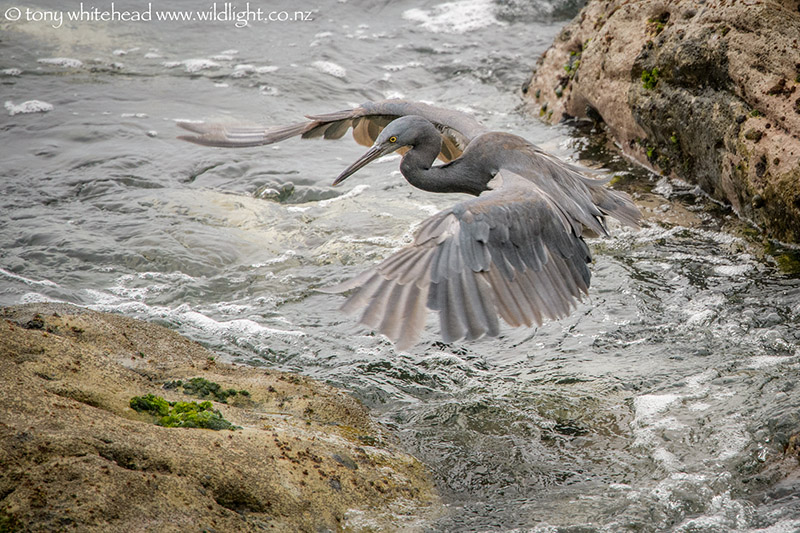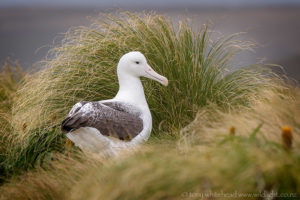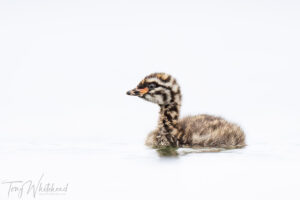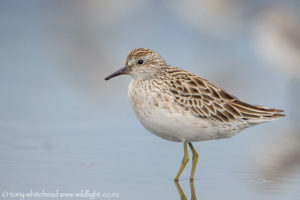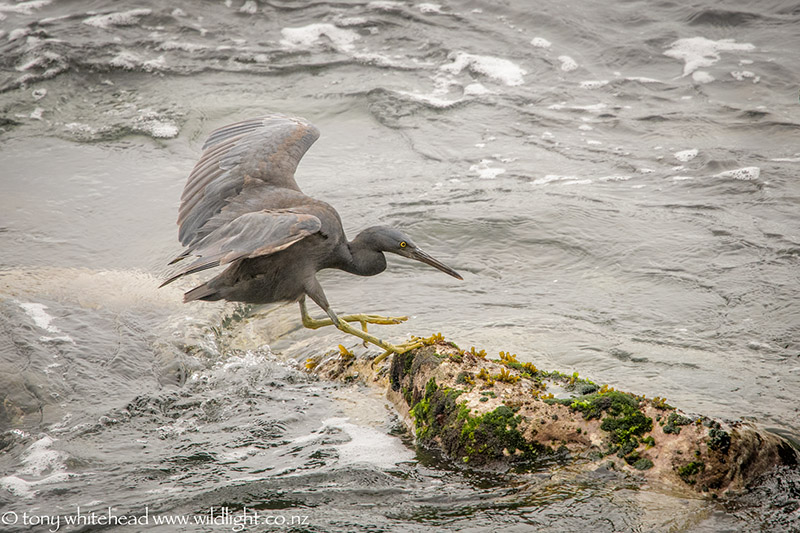
Photographing a Reef Heron has been a long term project and a bit of a standing joke. We occasionally see one when up at Mount Maunganui and have carried heavy long lenses on many a walk around the Mount in the hope of an opportunity. It has been a couple of years since we last saw one and whenever we have been debating what gear to take and tempted to leave the heavy stuff at home, asked the question “what if we see a Reef Heron?” This year we were both in a light gear mode and left the heavy lenses at home. Unsurprisingly, we managed to get opportunities on Reef Herons two days in a row!
The first was during an evening session when I walked down onto some rocks to photograph a Pied Shag that was drying his wings in the last warm sunlight of the day. On turning back I saw Edin wildy waving her arms and gesticulating toward the rocks a little further out from me and through a gap I saw a Reef Heron. I had the Nikon D500 with 300mm f4 PF with 1.4x teleconverter giving me the equivalent angle of view of a 630mm f5.6 lens and managed to grab a shot just before it flew across to some rocks. The Nikon D500 autofocus continues to amaze me and this was another example of its performance. In relatively low light it held and tracked the grey heron against a contrasty rock background giving me a number of sharp shots to choose from out of a 10fps burst. The nesting Southern Black-backed Gulls were mobbing the Reef Heron and it soon departed and as it did, Edin noticed another bird fly off with it.
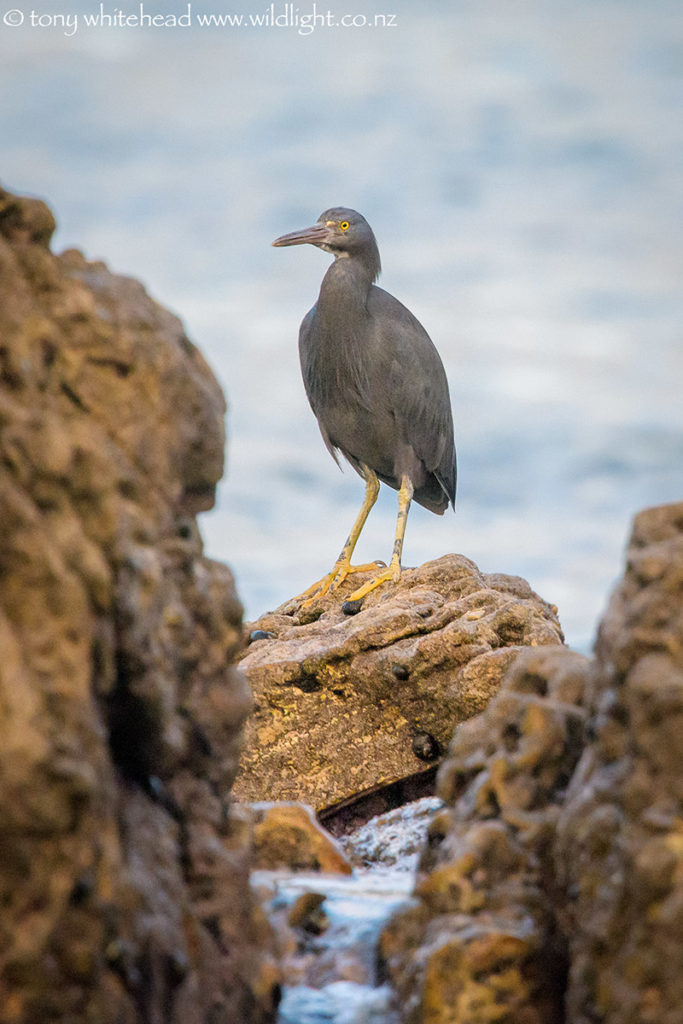
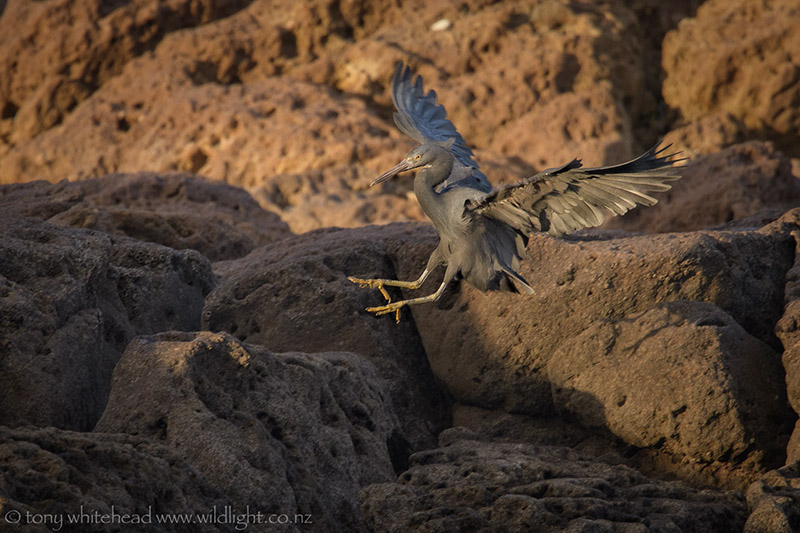
The next morning we were again walking around the Mount and I saw a gull repeatedly diving down at something among the rocks. A Reef Heron poked its head up and we noticed that there were two of them. One flew off and then the gull abandoned its persecution leaving the remaining Reef Heron to forage in the wash around the rocks. It seemed quite relaxed and gave us an opportunity to get some more reasonable pictures.
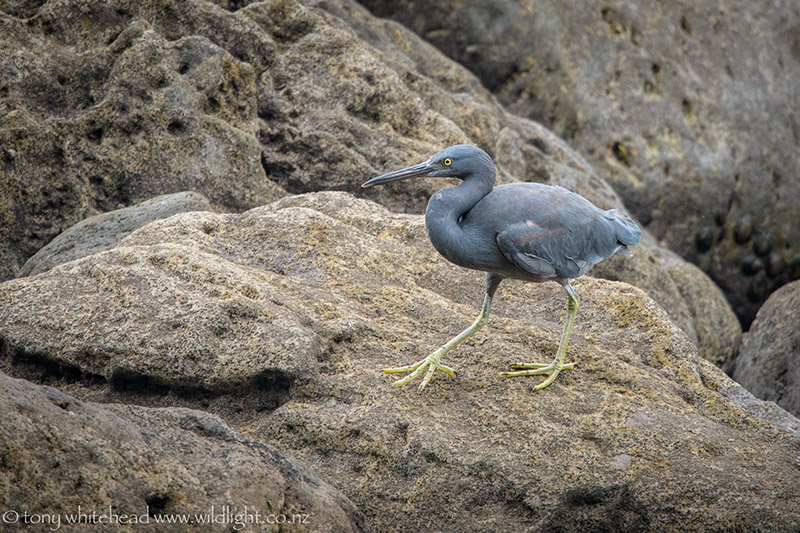
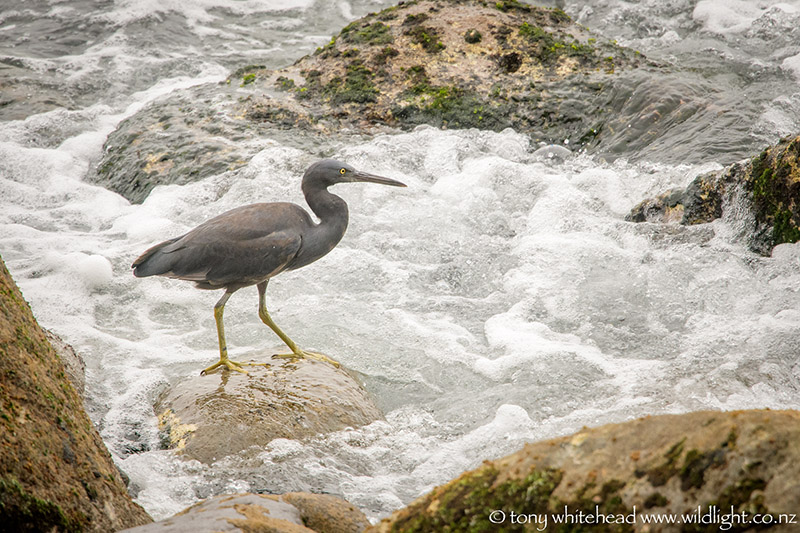
I had the same gear as the previous evening and it was another example of the versatility of this combination with the light weight making it so much more comfortable to carry compared to a full frame DSLR with 500mm f4 on a monopod over the shoulder.
The Reef Heron is not a common sighting for us but is most commonly seen in the north of the North Island. It is a similar size to the very common White-faced Heron but is a uniform dark grey which is a great camouflage for their foraging habitat which is very similar to the Little Egret that I covered in this post from South Africa. Their legs are a yellowish-green with occasional grey spots, the pattern of which can be used to identify individual birds and shows that the 2 birds photographed were different individuals. For more information see the NZBirdsOnline Reef Heron page.
